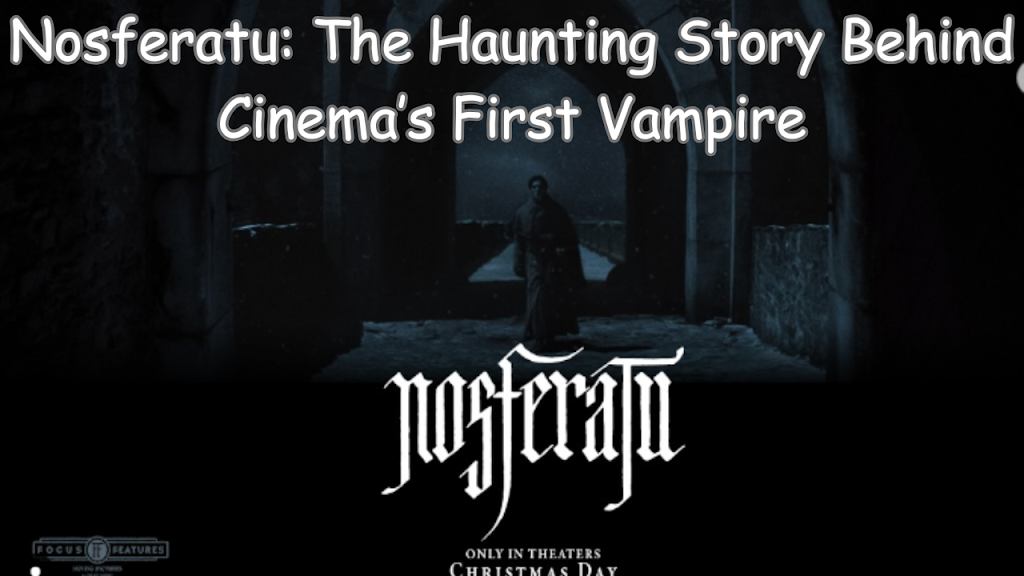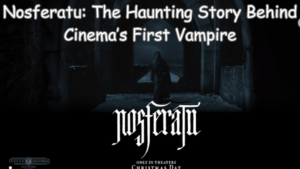
From Shadows to Screens: The Undying Legacy of Nosferatu
Nosferatu: A Cinematic Journey Through the Shadows
Nosferatu, the hauntingly iconic film that first graced screens in 1922, remains a cornerstone of cinematic history. Directed by F.W. Murnau, this German Expressionist masterpiece brought Bram Stoker’s “Dracula” to life in an unauthorized adaptation that redefined the vampire genre. As the years have passed, Nosferatu has continued to mesmerize audiences, inspiring countless adaptations and serving as a timeless testament to the power of horror cinema. This article dives deep into the historical significance, cultural impact, and enduring legacy of Nosferatu, including its much-anticipated 2024 remake.
1. Historical Context
Released during the silent film era, Nosferatu was an ambitious attempt to visualize the supernatural. Murnau’s adaptation deviated from Stoker’s “Dracula,” primarily to sidestep copyright issues. Count Orlok, portrayed by the enigmatic Max Schreck, became the chilling face of vampirism, with his grotesque appearance—bald head, elongated fingers, and rat-like features—etching itself into cinematic lore.
Nosferatu emerged from Germany’s Weimar Republic, a period of cultural flourishing amidst economic instability. German Expressionism heavily influenced the film, evident in its stylized sets, exaggerated shadows, and eerie atmosphere. This artistic approach not only enhanced the film’s horror but also reflected the existential dread permeating post-World War I Germany.
2. Plot Summary
Nosferatu tells the story of Thomas Hutter, a young real estate agent sent to Transylvania to meet the mysterious Count Orlok. Hutter’s journey leads him to a dark and foreboding castle, where he discovers Orlok’s vampiric nature. The Count’s obsession with Hutter’s wife, Ellen, propels the story into a nightmarish descent. As Orlok relocates to Hutter’s town, he unleashes a plague that decimates the population. In a climactic act of sacrifice, Ellen lures Orlok into the sunlight, destroying him and ending his reign of terror.
3. Cultural Impact
Nosferatu’s influence extends far beyond its initial release. The film laid the groundwork for the horror genre, setting a precedent for vampire films and supernatural storytelling. Count Orlok’s visual design has inspired depictions of vampires in literature, art, and media.
The film also pioneered cinematic techniques that have become staples in horror filmmaking. From the use of chiaroscuro lighting to convey tension to the deliberate pacing that builds dread, Nosferatu’s stylistic choices continue to inform modern cinema.
4. The Modern Remake
In 2024, Nosferatu receives a modern reinterpretation. Directed by visionary filmmaker Robert Eggers, known for “The Lighthouse” and “The Witch,” this remake promises to reintroduce Count Orlok to a new generation. The cast includes Willem Dafoe, whose performance as the eerie lead has generated significant buzz.
Eggers’ approach pays homage to the original while incorporating contemporary sensibilities. The remake explores the psychological depths of its characters, blending historical authenticity with a fresh narrative perspective. Early reviews suggest the film captures the unsettling atmosphere of the original while offering a richly layered story.
5. Critical Reception
Upon its initial release, Nosferatu faced legal challenges from Bram Stoker’s estate, resulting in an order to destroy all copies. However, the film’s survival—thanks to international distribution—cemented its status as a classic. Critics have lauded Nosferatu for its innovative techniques and atmospheric storytelling.
The 2024 remake has sparked debates among cinephiles, with some praising its artistry and others questioning its need. Regardless, the film has rekindled interest in the original, ensuring its relevance in contemporary discussions.
Read more like this – Jack Quaid: From Hunger Games Villain to Hollywood’s Rising Star – A Deep Dive!
FAQs
Q: What is Nosferatu about?
A: Nosferatu follows the tale of Count Orlok, a vampire who wreaks havoc in a small town, culminating in a battle between darkness and sacrifice.
Q: How did Nosferatu influence vampire movies?
A: Nosferatu introduced the visual and thematic archetypes of vampires, influencing films such as “Dracula” (1931) and “Let the Right One In” (2008).
Q: What are the differences between the 1922 and 2024 versions?
A: While the 1922 original emphasizes silent-era aesthetics, the 2024 remake incorporates modern storytelling techniques and psychological depth.
Q: Where can I watch Nosferatu online?
A: The 1922 version is available on platforms like YouTube and the Internet Archive. The 2024 remake is streaming on major platforms like Netflix and Amazon Prime.
Q: Why is Nosferatu considered a classic?
A: Nosferatu’s groundbreaking use of visual storytelling, its iconic villain, and its cultural significance make it a timeless masterpiece.
Visit us at: https://www.ameripharmtimes.in




Comments